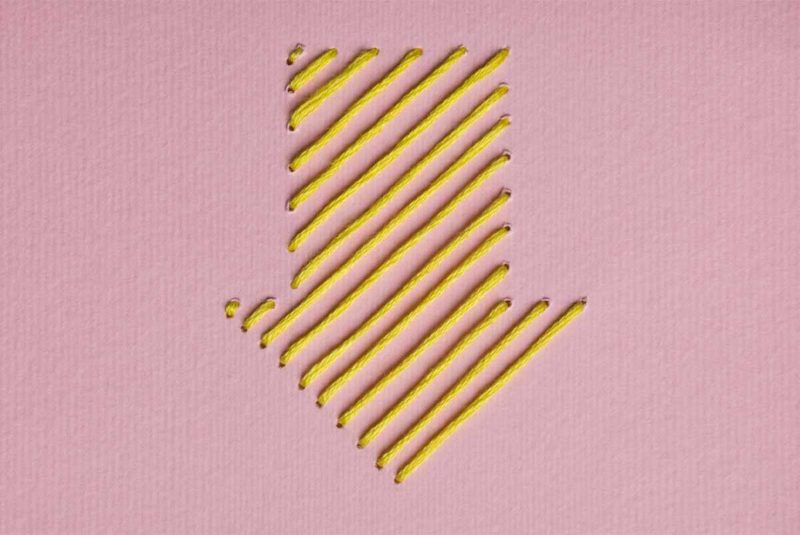Credit cards play an important role in the financial lives of millions of Americans. When you manage your credit cards the right way, they offer many perks.
Credit cards are a safer way to pay. They make big-ticket purchases easier. Many cards offer valuable incentives like rewards and cash back as a bonus.
However, if you overspend on your credit card accounts, the debt you accumulate can overshadow the benefits you enjoy. If you do get in over your head, it’s important not to ignore the problem. There are several strategies you can use to try to overcome a credit card debt problem, including credit card debt forgiveness.
Getting a card issuer to forgive your credit card debt isn’t an easy process, and it’s not the right approach for everyone. Here’s a deeper look at credit card debt forgiveness, how it works, and the benefits and drawbacks you should consider.
Credit Card Debt Forgiveness, Defined
Forgiveness, in general, is the idea of letting something go or releasing it. Credit card debt forgiveness happens when a credit card issuer frees you from the responsibility to repay your debt obligation. This process can involve full or partial release from your outstanding balance.
As you might guess, securing forgiveness from your credit card debt can be a challenge. Credit card companies are under no obligation to release you from your debt obligations.
It’s rare to find a credit card issuer willing to forgive the full amount of credit card debt you owe. Securing partial credit card forgiveness, on the other hand, may be possible in certain situations.
Pros and Cons of Debt Forgiveness: Is It a Good Idea?
Unless you’re lucky enough to come into a large sum of money, paying off debt can be a long journey. If you’re considering asking for credit card debt forgiveness as a way to manage your debt, you should take a look at the pros and cons of this approach first.
Pros:
- The primary benefit of credit card debt forgiveness is owing less than you did before. Your card issuer probably won’t forgive your full balance, but some savings is better than nothing when you’re in a financial bind.
- Resolving your debt through credit card forgiveness can reduce your stress level. A Capital One CreditWise survey found that 73% of Americans rank finances as a major cause of stress in their lives.
- Future late fees should stop. When a card issuer agrees to forgive some of your debt and you pay off the rest, your account should update to a $0 balance. At that point, you shouldn’t incur additional late fees moving forward.
- You can put an end to debt collection calls and letters. According to the National Consumer Law Center, credit card companies permit debt collectors to make as many as 3 – 15 phone calls to past-due customers per day. But when a card issuer forgives part of your balance and you pay the remainder, those collection efforts should stop.
Cons:
- It can be difficult to convince some card issuers to agree to forgive a portion of your debt. After all, you signed an agreement when you opened the account promising to repay everything you borrow in full.
- You may have to wait until a collection agency purchases your debt to negotiate partial forgiveness. If this happens, make sure to get any debt settlement offer in writing.
- There are potential tax consequences when a credit card company or collection agency forgives your debt. If a company forgives more than $600 in debt, you should receive an IRS Form 1099-C in the amount of the forgiveness. The forgiven debt may count as taxable income (though there are some exceptions). It’s typically best to consult with a tax professional in this situation.
- Debt forgiveness might hurt your credit scores. The creditor may report to the credit bureaus that you settled your debt for less than the full balance. However, if your credit reports are already full of late payment history from the account, the added impact of a settlement notation may be minor.
Timing Matters
When you are current on your credit card payments, there’s no incentive for a credit card issuer to forgive any of your debt. But if you’ve fallen behind and haven’t made a payment in months, a credit card company might consider forgiving some of what you owe.
Around the 180-day-past-due mark, a credit card issuer may decide to charge off your unpaid debt. A charge-off isn’t the same as debt forgiveness. You still owe the full balance.
However, when your account reaches charge-off status, a third-party debt collector may get involved. At this point, you may wind up with a collection account on your credit reports in addition to the original credit card account.
How Can You Ask for Credit Card Debt Forgiveness?
Here are five steps you may need to go through to request credit card debt forgiveness from a creditor or collection agency.
- Save in advance: You generally have to be able to make a lump sum payment if you want a company to forgive a portion of your credit card debt.
- Find out who owns the debt: Reviewing your credit reports may provide an answer to this question.
- Make a call: Depending on who owns the debt (e.g., the original creditor or a collection agency), you can reach out to see if debt forgiveness is an option. If you have the capability, it might be a good idea to record the call. Just be sure to disclose that you’re doing so. Every industry has shady characters, and the debt collection space is no exception. A recording could protect you if something goes wrong.
- Ask if the creditor or collection agency will settle for less and forgive part of your debt: If a credit card issuer thinks it won’t be able to collect your outstanding debt, it might be willing to listen to your proposal. A debt collector will usually entertain the idea of settling for less and forgiving part of your debt as well.
- Get the offer in writing: If a creditor or debt collector agrees to settle your debt and forgive the remaining balance, get the offer in writing. Even if you record your settlement calls, a written settlement offer provides more protection in case a company tries to collect the remaining balance after you make your settlement payment.
Alternatives to Credit Card Debt Forgiveness
A credit card issuer or collection agency may reject your request for debt forgiveness. Even if this happens, you may still have other options.
1. Debt consolidation
If your credit scores are in good standing, you might be able to qualify for a balance transfer credit card or debt consolidation loan. While these are different financial tools, they act in a similar fashion. Assuming you can qualify for a lower APR, you move your existing debt to a different credit card or personal loan.
Balance transfer cards
Balance transfer credit cards often have a special introductory rate, usually for 12 – 24 months. If your credit scores are good, look for one with a zero percent APR.
You’ll probably have to pay a balance transfer fee when you move your debt to the new account. That fee is usually around 3% – 5% of the amount you transfer. But if you can pay off what you owe during the introductory rate period, you might save money overall, despite the balance transfer fee.
Personal loans
You may also be able to find a debt consolidation loan with a lower interest rate than what you’re paying on your credit card accounts. However, you won’t be able to secure a zero percent personal loan offer like you might with a balance transfer card — not even a temporary one.
On the plus side, personal loans don’t come with balance transfer fees, yet some loans feature origination fees and other fees instead. So, be sure you know the terms of a loan before you sign on the dotted line.
When you use a personal loan to consolidate, it could reduce your credit utilization rate in a hurry. That can be good for your credit scores. Personal loans are installment accounts, not revolving accounts like credit cards. Therefore, a personal loan balance won’t factor into your credit utilization rate.
Be aware
With either of these consolidation options, you won’t lower your overall debt at first. But you may set yourself up to save money if you can secure a better interest rate. No matter which consolidation option you choose, resist the temptation to start charging more on your credit cards that no longer have balances.
2. Debt management plan
A debt management plan (DMP) is another way to manage out-of-control credit card debt. Although a DMP isn’t a forgiveness program, it could offer you the chance to reduce interest fees and save money as you pay down debt.
With a DMP, you work with a certified nonprofit credit counseling program to structure a repayment plan for eligible unsecured debts, like credit cards. Plans typically last for three to five years.
If you’re considering this route, you should look for a nonprofit agency that is accredited. The National Foundation for Credit Counseling can be a good place to start your search.
A credit counselor might be able to negotiate lower monthly payments or lower interest rates on your unsecured debts. With a DMP, you make a single payment each month to the credit counseling agency. The agency, in turn, will forward payments to creditors on your behalf.
There are some drawbacks as well. DMPs are seldom free. You might have to pay an enrollment fee plus a monthly fee. Furthermore, DMPs usually require you to close your credit card accounts and agree not to open any new credit accounts until you complete the payment plan.
If you have trouble making all your credit card payments, a DMP might help. However, if you are struggling to make ends meet, you might require a more aggressive approach.
3. Bankruptcy
No one likes to think about filing for bankruptcy. It’s typically an option of last resort. But if you’re in a desperate financial situation with more bills than money, it’s a potential solution that might help you.
Chapter 7 and Chapter 13 bankruptcy
Two of the most common types of bankruptcy are Chapter 7 and Chapter 13.
- Chapter 7 bankruptcy: You may have to sell some or all of your assets to pay off your debts. So, if you own a home, Chapter 7 might not be the right fit. A bankruptcy trustee will take any funds from the sale of your assets and use them to pay your creditors. When the process concludes, your remaining debts will be discharged. The Chapter 7 bankruptcy process often takes four to six months. It is considered a liquidation.
- Chapter 13 bankruptcy: You can keep your property, like your house, with a Chapter 13. But you’ll have to make a court-mandated repayment plan for the next three to five years. Depending on your financial situation, you might not have to repay everything you owe. The bankruptcy court may reduce some debts on your behalf, and your creditors will be bound to accept those adjustments. As you make your Chapter 13 payments, a trustee will distribute the money to your creditors. This process is considered a reorganization.
On the plus side, you will not face any tax consequences for debt forgiveness. Chapter 13 can protect some of your assets as well.
The chief drawback of bankruptcy is the impact it may have on your credit. A Chapter 7 bankruptcy can remain on your credit reports for up to 10 years, while a Chapter 13 bankruptcy can stay for seven years.
You can rebuild your credit after bankruptcy, and you don’t have to wait 7 – 10 years to start. Getting a credit card after bankruptcy (and using it responsibly) might be a helpful way to kickstart your credit rebuilding journey.
Next Steps
Delinquent credit card debt can be a constant source of stress in your life. But if you’ll make a plan to address the issue, you can put yourself in a position to move forward.
Credit card forgiveness is one debt relief strategy worth considering in certain circumstances. However, don’t be discouraged if this approach doesn’t seem right for you, or if you can’t get your creditor to agree. There are other ways to pay down your credit card debt and improve your financial life.
The Short Version
- There are many paths out of debt, including asking your creditors to forgive some or all of your outstanding balances
- Credit card debt forgiveness happens when a credit card issuer frees you from the responsibility to repay your debt obligation
- No matter which consolidation option you choose, resist the temptation to start charging more on your credit cards that no longer have balances




